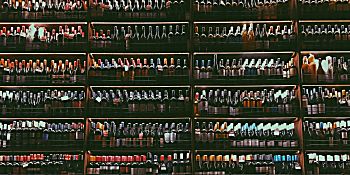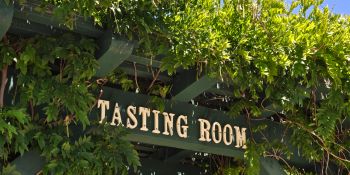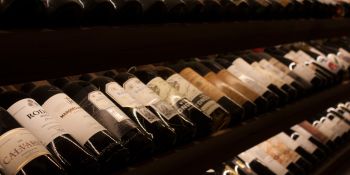How to Buy Expensive Wine (Online)
There’s a lot to consider before plunking down serious dough for wine
As I discuss on my list of best high-end wine clubs, I recently asked the r/Wine redditors about the industry standard terms for price ranges like Premium and Luxury. Have the ranges moved since inflation kicked in? Have buyer’s preferences changed?
 Photo by Jean-Luc Benazet on Unsplash
Photo by Jean-Luc Benazet on Unsplash
The group’s proposed ranges felt right. While I broke “high-end” into the $25-80 range, it’s safe to say that Luxury wines suitable for aging now cost north of $80 and regional stalwarts like Napa and Bordeaux are now averaging over $200 for “the good stuff.”
These are the ranges I discuss on this page, though you can apply these buying tactics in the $50-80 range sometimes, too.
- $80-150 = Luxury
- $150-350 = Super Luxury
- $350+ = Icon
Why you should trust my recommendations
I am a wine connoisseur with a custom-built wine cellar where my husband and I age the wine we acquire via our favorite wineries. We built the cellar before we started aging our wine and recently have discussed that it should have been 3x larger to accommodate our specific aged wine habits. C’est la vie.
Based on our own wine aging experience and connections I’ve called on throughout the wine industry, I produced a Useful Guide to Aged Wine. This is a good place to start when you’re thinking about aging wine, as well as deciding whether to drink a bottle you already have. The end of the guide also has recommendations about where to buy aged wine (which will get covered in this article, too).
FYI: I find great wine deals so you don’t have to. To keep me on the hunt, I earn a commission when you buy wine based on my recommendations.
Where connoisseurs buy expensive wine
 The dreaded wall of wine at the store (although this wine store somewhere in Italy looks fascinating). Photo by brandy turner on Unsplash.
The dreaded wall of wine at the store (although this wine store somewhere in Italy looks fascinating). Photo by brandy turner on Unsplash.
It’s not uncommon for Napa wine lovers to buy directly from their favorite wineries. At the luxury end of things, most wineries don’t have wine clubs, they offer wine allocations — they release wines to their list of loyalists and you buy what you want.
For other regions, if you’re not a high-end wine store, restaurant, importer, or distributor with a negociant license, it’s unlikely you can buy straight from the winery (especially in France, but also in Italy).
A great deal of super luxury wine from everywhere in the world is purchased at high-end restaurants who have on-staff sommeliers and wine lists that are dozens of pages long. During COVID many of these restaurants liquidated part of their older inventory to help keep the doors open, and some of these once-famous lists are now getting a tad anemic.
Some lucky wine lovers have great local wine shops with a good selection of luxury, super luxury, and icon wines. Most of them overcharge for those wines because they know you have deep pockets if you come in asking for them. Also, most of them don’t have the buying power to access the best selections.
So if you’re not buying from the winery, and you’re not buying from Michelin-starred restaurants, and you don’t have a local wine shop with top tier options, where does a collector go to find fine wine for both drinking and cellaring? The Interwebs!
Buying directly from wineries
 Winery tasting rooms are an excellent place to discover expensive wine worth buying — because you like it!
Winery tasting rooms are an excellent place to discover expensive wine worth buying — because you like it!
Did you know that in most states you can buy wine from your favorite wineries online and have it shipped right to you? Almost all states in the US allow wineries to send wine directly to the consumer (major exceptions being Utah, Alabama, and Mississippi).
If you have a favorite winery (or several) a winery wine club membership is exactly the sort of thing you should check out. In addition to regular shipments and discounts on all your wine purchases with them, they often have pick-up parties for anyone who wants to drive in and pick up their wine in person.
They often reserve their most interesting wines for wine club members. With a winery wine club, you’re essentially committing to receive shipments (usually) from two to four times a year. Because you’re a loyal customer, they let you have access to special or limited bottlings, library wines (older vintages they’ve held back for future sales), and sometimes futures (pre-sales on wines before they’re released).
Some wineries have made online membership a breeze without having to visit the tasting room to sign up. In all of these cases, winery members get wines that aren’t sold nationally because they’re produced in much smaller volumes than their most famous selections.
Here are a few of note: HALL Wines (and WALT and BACA), Clif Family Winery, Pali Wine Co, The Vice Wines, Stags’ Leap Winery, Beringer Vineyards, Beaulieu Vineyards, Etude Wines, The Prisoner Wine Company, and Robert Mondavi Winery.
The most sought-after wineries often don’t have wine clubs, they have allocation lists. This is mostly true for Napa’s renowned, cult, and rare wineries, though some wineries outside Napa also offer allocation lists.
To buy wine this way, you’ll need to get on their list and watch your email. When new allocations are available you can buy those wines, sometimes at a discounted price. Many winery lists are over-allocated and have waitlists (some are years long). Most allocation lists go out in Spring and Fall, which are the most common times to release new wines for high-end wineries.
Online stores for wine collectors
 The amazing new Millesima wine store in New York City
The amazing new Millesima wine store in New York City
Maybe you’re not excited about a luxury wine subscription where all of the wines are chosen for you. Or you don’t want to limit yourself to a few wineries. There is still a world of luxury wine for you that goes beyond your local wine shop.
Some things to know about buying fine wine online
Fine wine stores often sell wine they don’t have in inventory. The main two ways to buy wine that hasn’t already been purchased by the retailer are Pre-Arrival and Futures. I go over this (and much more) in the Where to Aged Buy Wine Online section of my Aged Wine Guide, but here’s a quick primer.
These terms typically apply when buying imported wine, though lately there’s been movement toward buying wine on futures in the US (mostly Napa).
Pre-Arrival. This means the already-bottled and released wine has not yet been imported into the US.
Two of the online stores I’m about to discuss (Millesima and Westgarth) both have their unprecedented access to anything they want because they have long-standing European businesses and connections. Their US businesses are new and most of their inventory is either in storage in Europe or won’t be acquired from the winery until you purchase.
Futures (and En Primeur). This is wine that has not yet been bottled or released. It’s basically buying wine on spec that it will be good. Bordeaux does En Primeur, in which negociants and critics are invited to an annual event to taste the wine while it’s still in barrel and weigh in on what kind of vintage it is going to turn out to be.
This process also sets market prices for the wine, however the Chateaux don’t always listen to the market. For everywhere else, Futures is a speculative endeavor. If you have experience with a winery and you like what they do, the risk is less, but there’s always a risk you won’t like the wine you’ve bought in any given new vintage.
Westgarth Wines offered these tips for wine collectors:
When it comes to getting into collecting fine wine, the key thing is information: about the quality of the wines, their reputation, their appreciation potential, and pricing transparency. Before you begin collecting for investment purposes, it’s advisable to learn about wine and taste broadly. You can also seek professional advice on how to start your collection the right way.
When it comes to documentation, it is important to keep records of every purchase including the price and source as the history of ownership and storage conditions can affect the wines’ value. Finally, most collectors also balance their purchases between wines for immediate consumption, short-term (5-10 years) and long-term aging.
Some advice about buying expensive wine online
My strongest piece of advice here is to double up on your purchases. If you’re spending this kind of dough on a bottle of wine you can afford to buy at least two of them (and you can’t afford not to).
The very last thing you want to have happen is to cellar a wine for years only to discover it’s absolutely magical and you can’t get more. Trust me, I have experienced this and it’s always a huge regret that we didn’t buy more.
In this price range you’re much more likely to be thrilled to have a backup bottle than you are to be sorry you have two (or more) of them.
My top places to buy collectible wine online
The biggest obstacle facing a would-be wine collector when starting out online is who to trust. Wines have provenance just like artwork does and wine fakes aren’t just for movies about Rudy Kurinawian. So, while many stores sell expensive wine online, I have narrowed my shopping down to those who have sterling reputations and don’t gouge their customers.
Price gouging happens a lot with wine because some stores assume that if you have enough money to spend on a $200 bottle of wine you probably don’t care if you spend $225 or even $250 for that same bottle. I’m not a fan of those practices so wine shops that I know have a great reputation but I also know overcharge aren’t on this list.

Millesima USA. Millesima is a specialty wine seller headquartered in Bordeaux with a retail outlet in New York which handles its US operations. The New York store was recently remodeled and is now a wine mecca visited by influencers and shared all over social media.
This France-based retailer offers an unprecedented selection of fine French wine. If you’re looking for something from France, start here. No matter what collectible Chateau or vintage you're looking for, odds are good they have it. And the best part is, you can buy with confidence.
Their collection in France (often listed as Pre-Arrival) on their website, was all purchased directly from the Chateaux at the time of release and has been perfectly stored in the Millesima facility in Bordeaux. They’re also large-format specialists!
Back vintages and Futures are the highlight of working with a retailer like Millesima, but their inventory is shockingly broad and you'll find all kinds of treasures and gems on their site. Be warned! You may fall down the fine wine rabbit hole browsing their site like I do!
Westgarth Wines. When I first spoke with Alexander Westgarth on the phone, I realized I had no idea how certain parts of the wine world work (particularly the Old World parts).
Every wine Westgarth sells comes in its original wooden case (OWC). This format is the most desirable for resale because you can be sure it’s not a fake and was most likely acquired either directly from the winery or from someone who checked the provenance before they bought it.
This authenticity often leads to higher prices in the secondary market, or if you intend to drink it, it allows you to break one out of wine jail every once in a while to enjoy as the wine matures. OWC makes a great gift, too, especially for birth year wines (and anniversary year wines, too).
I mentioned how I was blown away by Millesima’s inventory? Well fast forward five years and I had the same experience again. They have access to back vintages (and seriously aged wine) from almost every top producer in Bordeaux, Burgundy, Champagne, and the Rhône Valley.
Except Westgarth doesn’t actually currently have all of the wines for sale on their site and everything is sold Pre-Arrival.
Wine Access. WineAccess is an online wine store where the inventory is curated by a team of sommeliers and wine industry professionals. You can get a sense of how they think of wine by how they organize the site. Categories listed include: Rare Allocations, The Icons, and Passion Projects.
While they’re well known for their over-the-top emails promoting amazing wines at unbeatable deals (your mileage may vary), they also carry a jaw dropping (though small) selection of luxurious and iconic gems.
Last I looked there was a $6500 bottle of Oublie Port from 1882(!), a 6-vintage vertical of Ducru-Beaucaillou for $2999, a six-bottle collection of 100-pt Bordeaux for $2100, and some Burgundy that’ll set you back a couple grand (or more). They also carry vintage Champagne from icons like Cristal, Bollinger, and Billecart-Salmon, and culty Napa wines like Dalla Valle, Larkmead Vineyards, and Favia.
Wine.com. Its reputation is that of the Amazon of wine, and like Amazon they have products at every price point. At last check, they carry 37 different 100-point Bordeaux and 78 96+ Burgundies (some as low as $29.99!). They don’t stock much aged wine but they do offer more than 360 magnums and large-format bottles plus more than 280 half-bottles and splits (and cans). Half bottles are a great way to taste your way through super high end wines, just remember that they age faster in small bottles because the oxygen to liquid surface area ratio is higher than in 750mL bottles.
K&L Wines. A mind-bogglingly huge inventory of over 8,000 different wines (almost 40% of which are over $100 a bottle), K&L almost certainly has what you’re looking for from Champagne to Bordeaux, from Piedmont to Napa. They may not be as well known outside California (especially outside the Bay Area), but their reputation is immense here in the home of American wine.
You can now shop luxury wines in my wine marketplace. With thousands of bottles in inventory, you’ll find something you can’t wait to get your hands on. Shop Bordeaux, Barolo, Champagne, Napa — or whatever makes your mouth happy.
